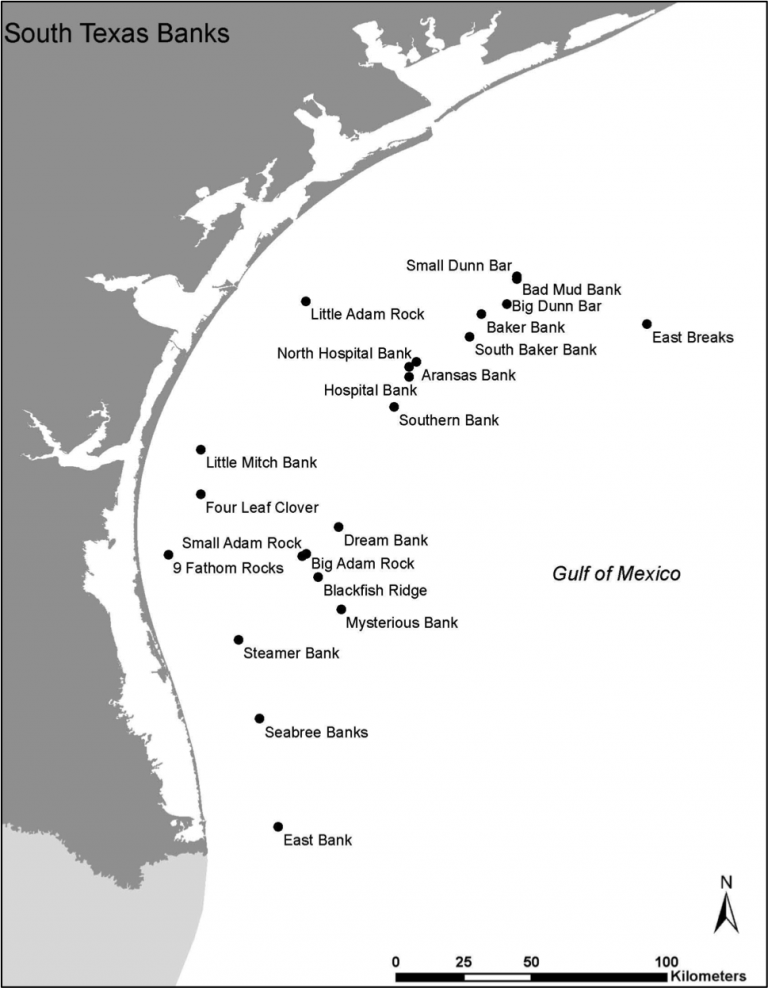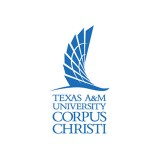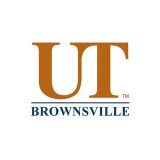The Schmidt Ocean Institute has put its flagship research vessel Falkor through another strenuous test while exploring deep rocky banks south of Texas. The team used one of the most advanced multibeam sonar systems available to map these areas in great detail. This information will be used to plan dives with Deep Sea Systems International’s Global Explorer MK3 remotely operated vehicle. In many cases, these dives revealed never before seen sites.
Dr. Thomas Shirley of Harte Research Institute at Texas A&M University, Corpus Christi led the science side of the expedition. Plans for the ROV dives including running video transects across the ridges, bumps and crevices of various bank areas that run along the edge of the Continental Shelf, and collecting samples of everything from sediments to sea stars. The Global Explorer’s multi-jointed hydraulic manipulator arm and other collection and storage devices, combined with the ROV team’s substantial expertise, made such difficult feats look easy.
High-definition cameras, including one 3-D version, sent video topside that everyone aboard was able to watch thanks to Falkor’s extensive network of HD monitors–from the galley, to labs, to individual staterooms.
Life on the Banks
The shelf edge banks, today in the 200 to 400-foot-deep range, were shallow-water coral reefs during the last ice age. Now they support an entirely different range of deeper-dwelling animals, but a range that’s extremely diverse and that forms an important part of the Gulf ecosystem. The banks are home to a range of invertebrates such as sea urchins and shrimps and soft corals, and they are critical habitat and spawning grounds for many fish. Biologists think some of the banks may be particularly important for snapper reproduction.
At the surface, the vistiors are likely to see dolphins, sea birds, sea turtles, and pelagic fish such as sharks and billfish. The banks are particularly important destinations for charter fishing boats and sport fishermen who head there primarily to catch snappers. Historically, these areas have barely been studied, because access to submersibles and remotely operated vehicles in this region has been extremely limited, and the banks are below safe scuba diving depths. As such, this expedition will provide vital data to help scientists better understand these banks and the ecological roles they play.
The science team will try to better understand how these areas influence movements of animals from the tropics to the sub-tropics. One theory is that the banks may serve as stepping stones or oases of hard bottom in the softer expanses that cover much of the Gulf of Mexico’s seafloor. This could allow species to move from the Caribbean and Southern Gulf to the northern Gulf. Researchers also used samples collected on the expedition to assess the genetic similarities between animals from different locations along the banks, information that will also allow comparison to more distant locales.
The Team
Besides Dr. Shirley, the science team aboard Falkor included Dr. Paul Zimba of Texas A&M, Dr. Wes Tunnell of the Harte Research Institute, Dr. Andre Droxler of Rice University, and Dr. David Hicks of University of Texas at Brownsville, as well as seven graduate students. They conducted additional studies on topics such as the banks’ geology and toxic algal species found there.
Mark Schrope, a science journalist with a master’s in chemical oceanography joined the team to handle photography and to post regular updates on this website about the expedition’s most interesting events and findings. Schrope’s writing appears regularly in the news sections of journals such as Nature, as well as in publications like the Washington Post and Scuba Diving.
by Jimmy Mack and edited by Mark Schrope
Data & Publications
The resulting shipboard dataset is being archived at Rolling Deck to Repository.
Data, videos and imagery have been used in public outreach endeavors, in presentations to classes and in research seminars.
Data and maps from the cruise has been supplied to Texas Sea Grant, along with additional mapping data from Dr. J. W. Tunnell, Jr., from his prior research. The subsequent Falkor cruise completed mapping of areas we did not have time to map. These were used to produce a Sea Grant-funded wall map.
- Khanna, Pankaj, Andre Droxler, Jeffrey Nittrouer, Wes Tunnell, Thomas Shirley and Harriet Nash. 2013. Detailed bathymetric survey of uppermost Pleiostocene drowned banks along the South Texas shelf edge: A glimpse at their growth and demise during last deglaciation. Oral presentation at the 47th annual meeting of the Geological Society of America South-Central Meeting, 4-5 April 2013.
- Khanna, P., Droxler, A. W., and J. A. Nittrouer. 2014. Uppermost Pleistocene Banks Along the South Texas Shelf Edge: A Clear Case of Drowning Based Upon Their Morphologies. American Association of Petroleum Geologists Annual Meeting, Houston, TX. April 6-9, 2014.
- Rodriguez, R.E, D.W. Hicks, J. W. Tunnell, T. C. Shirley, P. J. Etnoyer, E. Hickerson. 2014. Assessing deep-water coral assemblages inhabiting relict coralbanks off the Texas coast. Oral presentation at the Texas Academy of Sciences, Galveston, Texas, March 7-8, 2014.
- Rodriguez, R. E., D. W. Hicks, J. W. Tunnell, T. C. Shirley, P. J. Etnoyer, and E. L. Hickerson. 2014. Assessing deep-water coral assemblages inhabiting relict coral banks off the South Texas Coast. Oral presentation at the 43rd Benthic Ecology Meeting, Jacksonville, Florida. March 19-22, 2014.
- Hicks, D.W., L. Lerma, J. Le, T.C. Shirley, J.W. Tunnell, R. Rodriguez and A. Garcia. 2013. Assessing fish communities of six remnant coralgal reefs off the South Texas coast. Proceedings of the 66th Gulf and Caribbean Fisheries Institute, November 4 - 8, 2013, Corpus Christi, Texas, USA.
- Khanna, Pankaj, Andre Droxler, Jeffrey Nittrouer, Wes Tunnell, and Thomas Shirley. 2013. Uppermost Pleistocene drowned coralgal bank detailed bathymetry along the South Texas shelf edge: record of episodic rapid sea-level rise during last deglaciation between Meltwater Pulses IA and IB. Poster Presentation at the American Geophysical Union Fall Meeting, 9-13 December 2013, San Francisco.
- Lerma, Liana, Jonathan Le, David Hicks, Rebekah Rodriguez, Andres Garcia, Thomas Shirley and Wes Tunnell. 2013. Assessing Fish Communities of Relic Coral Banks off the South Texas coast. 2013 annual Meeting of the Texas Chapter of the American Fisheries Society, Montgomery, Texas, January 17-19, 2013.
- Nash, H. L. J. Tunnell, Jr., and T. C. Shirley. 2013. Mapping the South Texas Banks. Proceedings of the Gulf and Caribbean Fisheries Institute. 2013. November 4 - 8, 2013, Corpus Christi, Texas, USA. An oral presentation of this manuscript was presented at the meeting.
- Nash, H. L. 2013. Trinational Governance to Protect Ecological Connectivity: Support for Establishing an International Gulf of Mexico Marine Protected Area Network. A Dissertation to the Coastal and Marine System Science Program, Texas A&M University-Corpus Christi Corpus Christi, Texas. August, 2013. 218 pages. One chapter deals specifically with cruise data.
- Nash, H. L., F. J. Kelly. 2012. Multivariate analyses of geologic features sheds light on biotic zonation of the South Texas Banks. Oral presentation at the 47th annual meeting of the Geological Society of America South-Central Meeting, 4-5 April 2013.
- Nash, Harriet L. 2012. Multivariate analysis of abiotic features sheds light on biotic zonation of hard banks in the Gulf of Mexico. Oral presentation at Graduate Student Forum, Texas A&M University-Corpus Christi. Dec. 7, 2012.
- Nash, H. L., S. J. Furiness, and J. W. Tunnell, Jr. 2013. What is known about species richness and distribution on the outer-shelf South Texas Banks? Gulf and Caribbean Research Vol. 25: 1-10.
- Shirley, T. C. and all members of the Science Team, Cruise FK005b-2012. 2013. Drowned coral reefs of the Pleistocene. A research seminar presented to the faculty of the Department of EOAS, Florida State University, Tallahassee, Florida, 8 February 2013.
- Trnka, Maureen. 2012. Mapping South Texas Banks. Presentation to faculty and graduate students of Texas A&M University-Corpus Christi, Nov. 9, 2012
- Tunnell, J. W., Jr. 2012. South Texas Banks: What we know and what we don't. Texas Coral Reefs: Today, Yesterday and Tomorrow. Baker Institute for Public Policy, Rice University 23-24 August 2012.
- Khanna, P., Droxler, A., Nittrouer, J., Tunnell, Jr., J., and Shirley, T. (2017). Coralgal Reef Morphology Records Punctuated Sea-level Rise During the Last Deglaciation. Nature Communications 8, 1046 (2017), doi: 10.1038/s41467-017-00966-x. [This article is published as OPEN ACCESS].
- Khanna, P., Droxler, A., Nittrouer, J., Tunnell, W., and T. Shirley. (2017). Late Quaternary Transgressive Coralgal Reef Growth Along the South Texas Continental Shelf Edge. Oral Presentation at Industry Rice Earth Science Symposium, Houston, TX, USA.
- Nauels, A., Rogelj, J., Schleussner, C., Meinshausen, M., and Mengel, M. (2017). Linking Sea Level Rise and Socioeconomic Indicators Under the Shared Socioeconomic Pathways. Env. Research Letters, 12 (11), doi: 10.1088/1748-9326/aa92b6.
In the News
New Science Suggests the Ocean Could Rise More – and Faster – Than We Thought
Washington Post • Oct 26, 2017
Post-Ice Age Sea Level Rise Happened In Bursts
IFLS • Oct 20, 2017
Oceans Can Rise in Sudden Bursts
Scientific American • Oct 20, 2017
Fossil coral reefs show sea level rose in bursts during last warming
Global News Connect • Oct 20, 2017
Fossil coral reefs show sea level rose in bursts during last warming
ScienMag • Oct 19, 2017
Fossil coral reefs show sea level rose in bursts during last warming
Science Daily • Oct 19, 2017
Fossil coral reefs show sea level rose in bursts during last warming
Phys.org • Oct 19, 2017
Past Global Warming Shows Us What the Future Holds
Green and Growing • Oct 20, 2017
Melting Glaciers Could Raise Sea Levels In Sharp Bursts, Reef Fossils Show
Press Release Point • Oct 19, 2017
Melting Glaciers Could Raise Sea Levels In Sharp Bursts, Reef Fossils Show
International Buisness Times • Oct 19, 2017
Coral Study: Previous Warming Period Inspired Sea Level Rise In Fits and Starts
Space Daily • Oct 19, 2017
Coral Study: Previous Warming Period Inspired Sea Level Rise In Fits and Starts
Newsline • Oct 19, 2017
Fossil coral reefs show sea level rose in bursts during last warming
Eurekalert • Oct 19, 2017
Fossil Coral Reefs Show Sea Level Rose in Bursts During Last Warming
ENGG Talks • Oct 19, 2017
Could the World be in for a Rapid Burst of Sea Level Rise?
Earther • Oct 19, 2017
During the last warming, sea level rose in sudden spurts
Earth.com • Oct 19, 2017
Scientists Discover Sea Levels Rose in Sharp Bursts During Last Warming
Ecowatch • Oct 19, 2017
Sea levels rose in bursts during past global warming
Futurity • Oct 19, 2017
Melting Glaciers Could Raise Sea Levels In Sharp Bursts, Reef Fossils Show
International Business Times • Oct 19, 2017
Fossil coral reefs show sea-level rose in bursts during last warming
Rice University • Oct 19, 2017
Fossil coral reefs show sea-level rose in bursts during last warming
Rice University YouTube • Oct 19, 2017
Texas A&M Corpus Christi Expedition Blog
Texas A&M
UTB trio completes research voyage in Gulf
The Brownsville Herald • October 5th, 2012
Dolphin encounter
Firstpost





